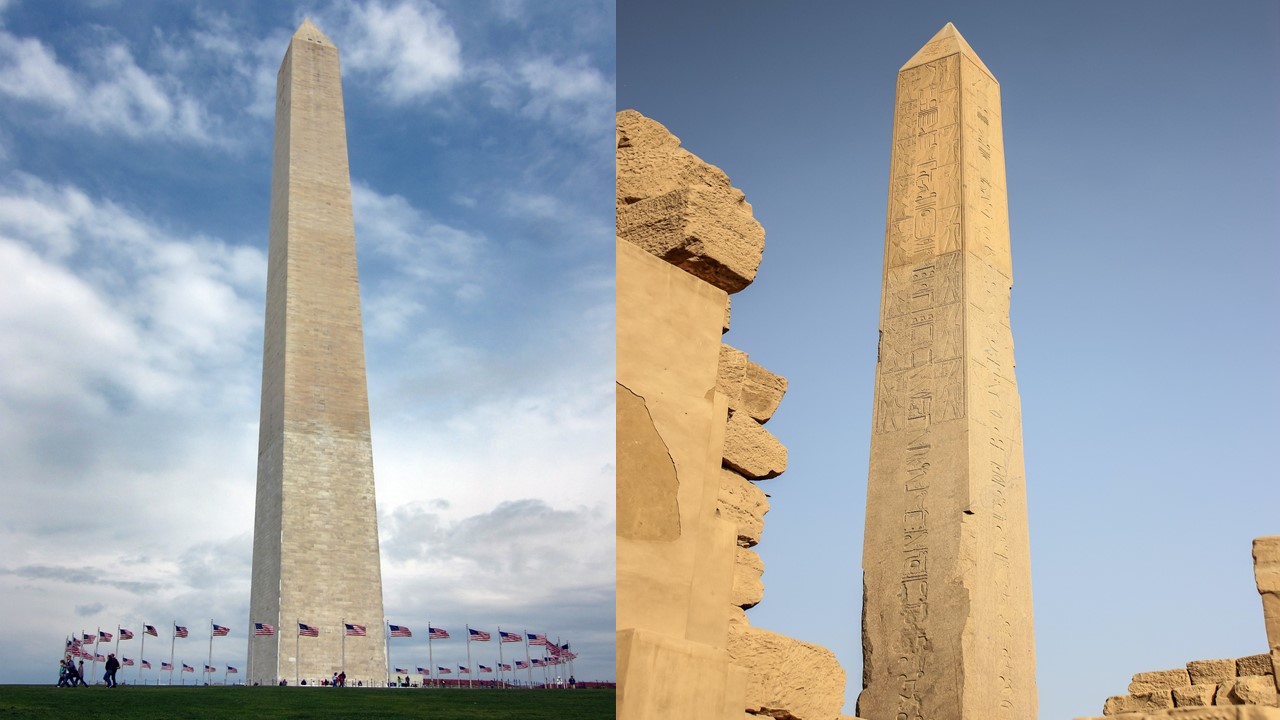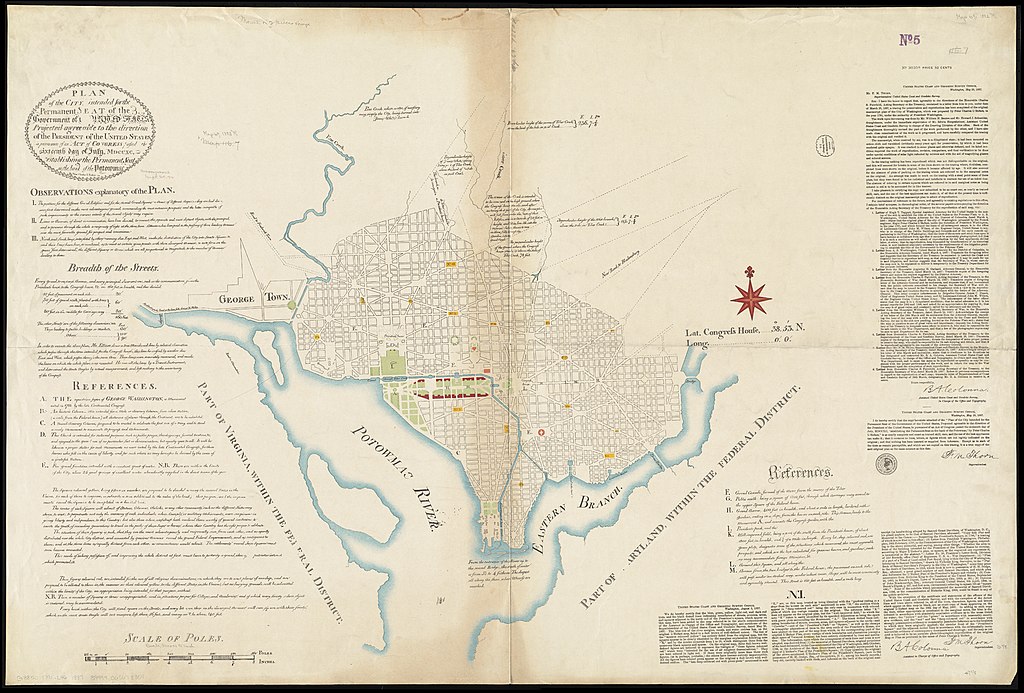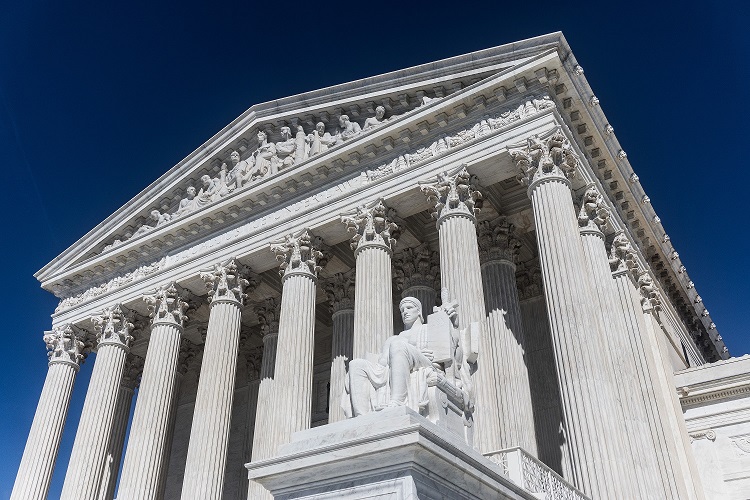The Washington Monument is an iconic structure, built to honor the first president of the United States, George Washington. But why is it shaped like an ancient Egyptian obelisk? Although the obelisk was always part of the plan for the monument, the original design by Robert Mill looked very different. It seems to have been rather eclectic, with a Roman-like pantheon, Greek-style columns, an equestrian statue in the tradition of Roman emperors, and, as said, an Egyptian obelisk. (Fun fact: another proposed design for the Washington Monument consisted of an Egyptian sphinx, with the head of an eagle).
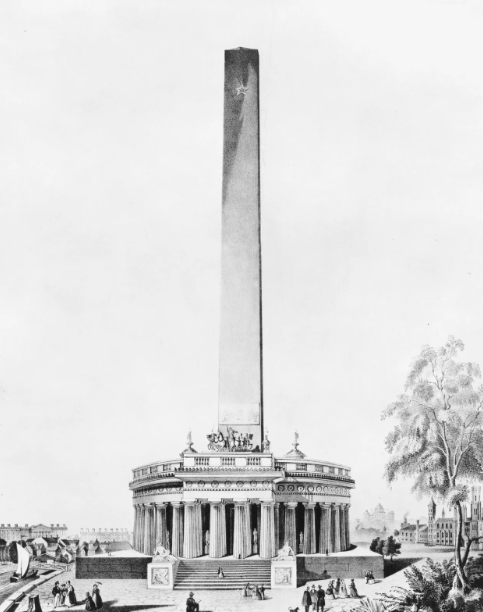
Robert Mills’s original design for the Washington Monument
Construction started in 1848 with the festive laying of the cornerstone, containing copies of the Declaration of Independence, the US Constitution, coins and newspapers. But soon, funds ran low. The Know Nothing party, an anti-Catholic and rather xenophobic political entity, was angered by the Pope’s donation of a block of stone from the ancient Roman Temple of Concord meant to be built into the monument. They confiscated the stone and seized possession of the monument project, bringing it to a halt. During the Civil War that followed, no work was done. To get things moving, in 1876 US Congress decided to drop Mill’s lavish design. Only the obelisk would remain.
Egyptomania
Part of the reason for choosing an obelisk to honor the first president was Egyptomania, a period of renewed interest in the culture of ancient Egypt sparked by Napoleon’s campaign in Egypt in the 19th century. But it was more than just admiration for this ancient civilization or the fascination for its temples, mummies and pyramids. For ancient Egyptians, the obelisk was a reverential monument, representing their kings, and honoring their gods, in particular the sun god Ra. In this sense, the obelisk stood for strength, success and unity.

Ra with falcon head and sun disk
Ra was also considered the ruler of heaven, king and father of all kings, and was strongly associated with rebirth and creation. Quite a thing for a mere mortal like George Washington to be associated with. But the monument wasn’t about just one man. It was just as much about creating a national identity; a message stating that the United States of America was, like the obelisk, solid, well-built and here to stay.
Hubris?
George Washington’s almost god-like status also becomes apparent from the statue created in 1840 by Horatio Greenough for the US Capitol building (currently at the National Museum for American History). The 10-foot-high statue of a seated, bare-chested Washington wearing a Roman toga, brings to mind depictions of the Greek god Zeus, while carvings on the sides show the Greek god Apollo and Greek hero Heracles.
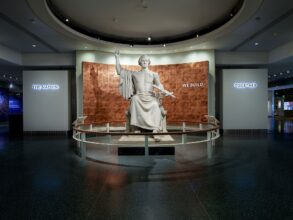
George Washington statue by Horatio Greenough
The ancient Greeks themselves might very well have considered such a depiction of a mortal a from of ‘hubris’, their term for excessive pride or dangerous overconfidence that violated the natural order between god and men. George Washington, often described as a man of integrity with a firm moral conscience, might have felt the same.
For more Egyptomania in Washington DC, check out The House of the Temple, a Masonic temple that serves as the headquarters of the Scottish Rite of Freemasonry, based on the one of the Seven Wonders of the Ancient World, the Tomb of Mausolus at Halicarnassus. Outside are two monumental sphinxes, inside some awe-inspiring Greek-Egyptian designs in marble.
Next week: Belonging to the Ages. In part 4 of this blog series, we’ll take a closer look to the Lincoln Memorial
Mieke Bleeker works as event coordinator at the John Adams Institute. She holds a Master of Arts degree from the Vrije Universiteit Amsterdam, where she studied Ancient History. Her fascination for the history and politics of the United States inspires her to visit the country regularly. She has written other blog series for the John Adams, about John Brown’s attack on Harpers Ferry, and about the Pilgrim Fathers.
